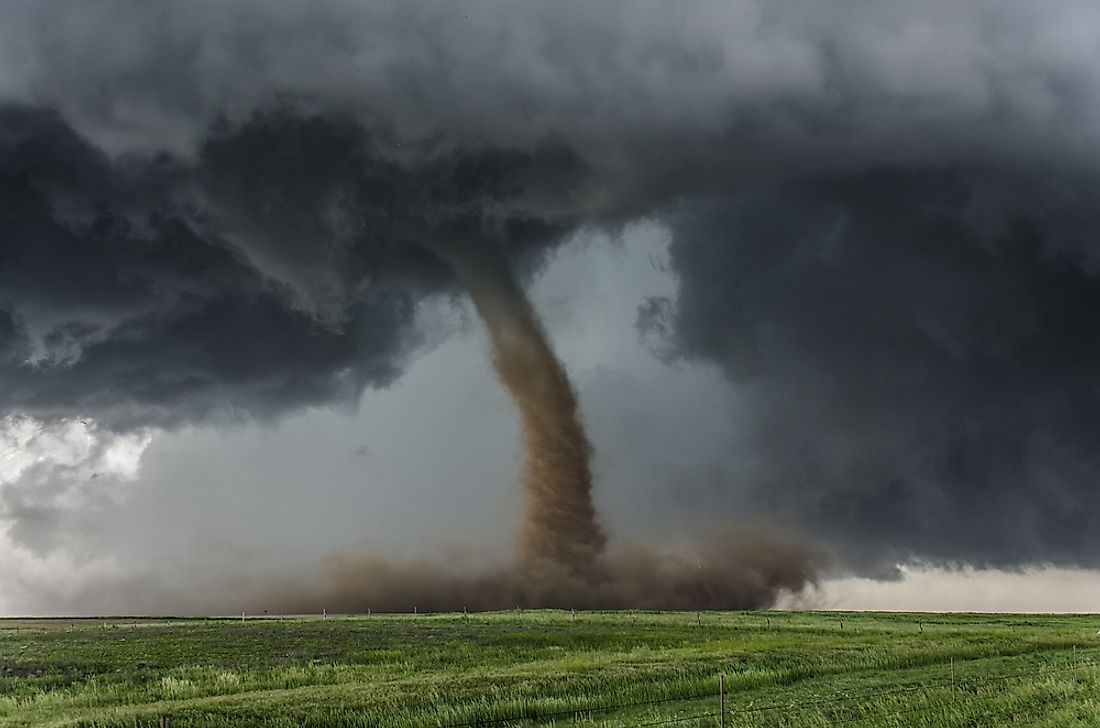What Is The Difference Between Hurricanes And Tornadoes?

Definitions
By definition, a tornado is an aggressively rotating air column spreading from the base of a cloud to the ground and is often (but not always) shaped like a funnel. In contrast, a hurricane is a violently whirling storm that originates from the tropics that is capable of having winds travelling at speeds between 74 mph (category 1 hurricanes) and 157 mph (category 5 hurricanes).
Other Differences Between A Tornado And A Hurricane
Firstly, hurricanes form over oceans found in the tropics when water is around 80° Fahrenheit. Hurricanes’ development is most optimal when they are a distance from a jet stream. On the other hand, tornadoes form over land and originate from small storm clouds that are in close proximity to a jet stream. In addition, tornadoes are capable of forming within a hurricane while the reverse is impossible.
On the topic of size, hurricanes are habitually bigger than tornadoes. Hurricanes measure hundreds of miles in width, enough to affect an entire small town or country. Tornadoes, in contrast, are usually small in the storm cloud and are rarely more than a quarter of a mile in width. The widest tornado ever had a width of 2.5 miles, a size barely enough to affect a small town. Regarding duration, hurricanes also outdo tornadoes. Hurricanes have the potential to go on for weeks while tornadoes usually abate within an hour or less.
Typically, hurricanes have wind travelling at speeds of less than 180 mph while the winds within a tornado are much faster with the ability of attaining speeds of up to 300 mph. Even category 5 hurricanes (the strongest hurricanes) with wind speeds of up to 155 mph are incapable of matching the wind speeds within a tornado. The strength of a tornado is gauged using the Enhanced Fujita Scale (the EF scale) while hurricanes are measured by the Saffir-Simpson Scale. Under this scale, the strongest tornadoes are categorized EF 5.
On average, there are ten hurricanes that occur over the Atlantic Ocean per year while tornadoes, on average, range from 800 to 1000 per year in the US alone. Season-wise, hurricanes can occur anytime of the year, although they are likelier in spring and fall, while tornadoes occur between June 1 and November 30 with a higher probability between mid-August and mid-October.
In terms of destructive potential, hurricanes are more destructive than tornadoes. Hurricane Katrina, the most destructive hurricane in the US damaged property worth $108 billion. By comparison, the most destructive tornado, which hit in the town of Joplin, Missouri, caused less than 5% of the damage done by Katrina. This massive difference is brought about by the fact that hurricanes are bigger and last longer than tornadoes.
Lastly, weathermen are capable of predicting the occurrence of hurricanes and give a warning to people several days before they happen. In contrast, tornadoes are much more difficult to forecast, and a warning is usually given between 15 and 30 minutes before they hit an area making them dangerous for unprepared people. Both of them can occur any time of the day.











